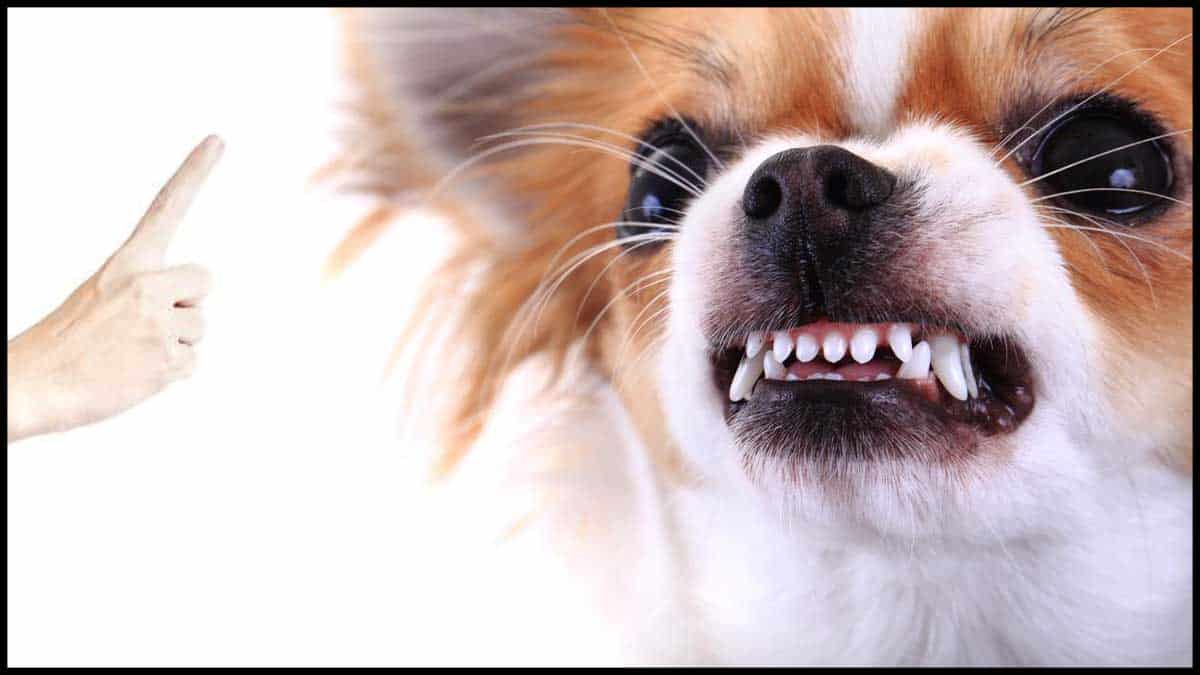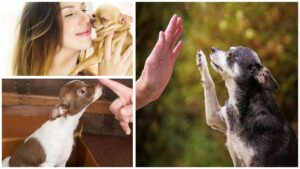It’s tough sometimes being the smallest dog on the block. If your Chihuahua growls at you or anyone he crosses paths with, it may be because he’s unsure of his place within his world. So, here’s how to train your Chihuahua not to growl.
Building up your Chihuahua’s confidence and making sure he understands his place is key in teaching him not to growl.
Chihuahuas have been bred to be companions for their owners. By nature, they are not automatically social dogs. They need to be trained to be social. Otherwise, they will come across as aggressive. Your Chihuahua may growl at you or others because he needs training on how to avoid this natural behavior. Teaching your Chihuahua to relax a bit around you and others will help to guide him growling is unacceptable.
Defining Tasks
Training your dog to relax isn’t as easy as simply telling him to relax. You will need to teach him that not growling is your expectation. Your Chihuahua will act aggressively and growl unless he knows other ways to act.
The first thing you’ll need to do is socialize with your Chihuahua. Once he knows his job is not to protect you and he is allowed to accept others in his world, people or pets, he’ll be better about reacting aggressively when around others. This is easier to train with a puppy, but you can redirect an adult Chihuahua as well.
Training will take more time and dedication to an adult. No matter the age, remember to reward good behavior and redirect poor behavior. Do not yell or hit your Chihuahua; these actions will only reinforce poor behaviors.
Getting Started
High-value treats are key in training your Chihuahua not to growl. Be sure to set aside some socializing time for your Chihuahua and short training sessions to build up respect and listening skills for your Chihuahua. Keep these training sessions short and only socialize at the beginning with people and dogs you know and are comfortable with. And always offer treats for your Chihuahua and the other animals you are socializing with.
The Socialized Chi Method
1. Schedule play
Schedule social opportunities for your Chihuahua. Plan social time with other dogs as well as with people so your Chihuahua gets used to being around both. Make sure you schedule social time with other dogs you know and are comfortable with. Your Chihuahua is a small dog and needs to be in a safe environment, especially while he’s learning he should be social himself. Prepare with treats for both dogs.
2. Even field
When you are ready to set up a playdate for your Chihuahua and another dog, be sure to pick a space that is an even playing field for both dogs.This needs to be in neutral space and not your house or the other dog’s house. You can meet outside on a walk or at a park. Stay away from dog parks or other dogs, which may distract these two guys from getting to know one another.
3. Set the tone
Using your vocal tone, let your Chihuahua know he is safe and what you are doing with him is okay. He will pick up on any stress or anxiety you have to remain calm and reassuring when you talk with your Chihuahua.
4. Leash and harness
When you are introducing your Chihuahua to a new dog, or even a person, be sure to harness him and have a leash on him. Do not use only a collar and a leash on a Chihuahua because if you need to pull your Chihuahua away from another animal or person before he becomes too aggressive, tugging on a leash and a collar could cause harm to your little guy. A harness fit just for your Chihuahua keeps your dog safe if you have to tug on the leash.
5. Treats
When both dogs meet, immediately offer them both a treat. At first, you do not need to make them work for it. Just give them a treat for sharing the same space together. Over time, as they sniff and get to know one another, you can ask them both to do commands such as ‘sit’ and then offer them each a treat. This shows your Chihuahua the other dog is on the same level as he is, and they can both earn treats by being nice and being good.
6. Avoid
The two dogs may be apprehensive about getting to know one another, or your Chihuahua may be apprehensive while the other dog is overly excited. Try to give them some space together while holding on to their respective leashes and avoid contact with them if it all possible. Give them a few moments to get to know one another. When you ignore either dog, offer both of them a treat; otherwise, leave them alone.
7. Growling
If your Chihuahua starts to growl at the other dog gently, tug on his leash, which will pull on his harness and remind him you are there and he is safe and does not need to react aggressively. When you see your dog home and not growling, give him a treat. Acknowledging good behavior with your Chihuahua will help him to know that is your expectation
8. Practice
Keep practicing socializing your dog with other dogs as well as with humans whenever you can. Unless your Chihuahua and the other dogs are extremely comfortable together, keep your socialization sessions fairly short. This will make socializing low stress and rewarding for your cup.
9. At home
When you catch your Chihuahua behaving at home without growling at you or your guests, you’ll know the socializing is working. Be sure to reward positive behaviors with positive rewards such as treat.
The Small Dog Syndrome Method
- Train
Teach your dog basic obedience commands. This gives him purpose and sets boundaries and rules in your household.
2. Food
Keep your Chihuahua behaving by training him to wait for his food. This sets your role higher than his role in your pack together. Make him wait for his food or work for it by doing basic commands to earn it.
3. Big dog
Treat your Chihuahua just as you would treat a larger dog. Don’t carry him from place to place. Make him walk. Don’t pamper or spoil him unnecessarily. Give him tools such as pet steps to use to get up on your furniture or bed so he acts independently when necessary. Do not take this to mean you cannot hold your Chihuahua, just make him do the things he can on his own. This will help build confidence.
4. Positive behavior
Reward your Chihuahua for positive behaviors when you see them. If your Chihuahua comes to you when called, give him a treat. If someone reaches out to pet him, give him a treat. When he is around other dogs without growling, give him a treat.
5. Growling
When your Chihuahua growls, ignore him and wait for him to stop. Once he stops, give him a treat. Continue to redirect his behaviors this way until you can put your hand up to him or have someone else near him without the Chihuahua growling.
6. Consistent
Be consistent with your expectations as well as with the rewards you offer your Chihuahua when he behaves well. Do not stop rewarding your Chihuahua just because he’s getting more used to behaving well. To keep him behaving as you’d like, reward him continuously as he does well. Once he is more social, you can raise the bar a bit and only reward when he’s not growling at all rather than when he takes a break from growling.
The Counter Conditioning Method
- Pay attention
Spend a few days watching your Chihuahua and noting when he growls and what makes him growl. Write down activities that make him uncomfortable enough to show his displeasure by growling.
2. Conditioning
Once you have a list of activities that trigger a growl from your Chihuahua, set up those opportunities as mini training sessions. If your dog growls when someone comes near him, work by yourself or with someone he knows but is not totally comfortable with. If he growls when the doorbell rings, use this as a training opportunity.
3. Activities
With your trigger list in hand, set up scenarios much like the real trigger event and show your Chihuahua how to stay safe and be comfortable during these times. If your Chihuahua growls when the doorbell rings, simulate that sound using your phone while sitting with your dog. Once he hears the sound, give him a treat. Try to give him this treat before he growls.
4. People
Condition your Chihuahua to be around other people by re-introducing him to someone he knows. Push his comfort level a bit by having this person sit near him and offer him a treat. Do not try to give the treat directly to the dog right off the bat. This person can lay a treat nearby, enticing your Chihuahua to go get it and work up to hand delivering the treat to your Chihuahua’s mouth over time.
5. Practice
Keep these things in practice with your Chihuahua, conditioning him to the people, pets, and activities that challenge his safety and comfort levels. Replicate events that make him growl offering rewards as he gets used to these events occurring in his daily life.
Source: wagwalking




